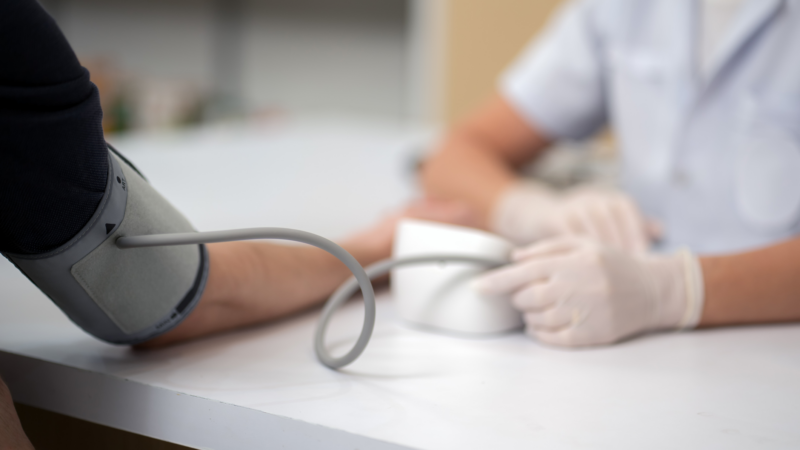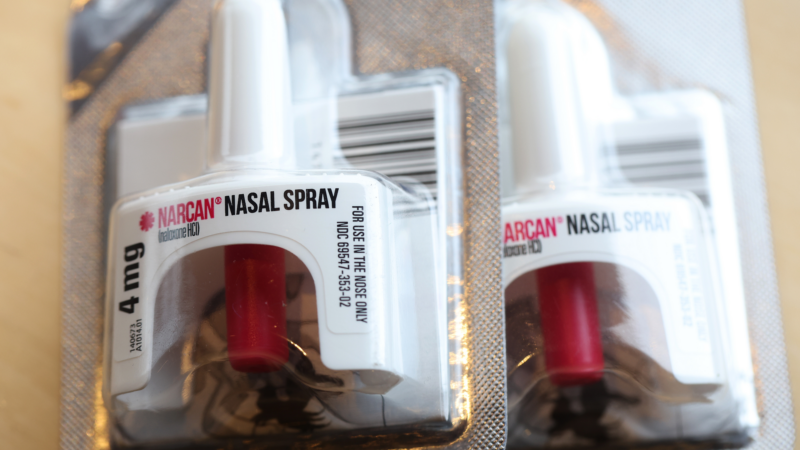A misplaced arm position can skew blood pressure readings
Think back to the last time you had your blood pressure taken.
How were you sitting? Where exactly was the cuff? And what specifically was your arm doing?
It’s such a familiar ritual of going to the doctor’s office that most of us scarcely think about the ins and outs, but in reality even small missteps can leave you with an inaccurate reading.
Research has shown that can happen for all kinds of reasons. The cuff size may be incorrect. A patient’s legs are crossed or dangling from the exam table. Simply the stress of being in the clinic, what’s known as “white coat hypertension,” can spike the numbers.
Now add to the list a relatively common faux pas: holding your arm in the wrong position.
A trial from researchers at Johns Hopkins University found that simply deviating from the guidelines for arm position can produce an overestimate of a patient’s blood pressure.
The inflated readings might be substantial enough to even lead to a misdiagnosis of hypertension and decisions to start medication, says Dr. Tammy Brady, a professor of pediatrics at Johns Hopkins University School of Medicine and senior author of the study, which was published in JAMA Internal Medicine on Monday.
“People take blood pressure screening for granted,” says Brady, “But a lot of decisions are made based on what that reading is on the device.”
In the trial, more than 130 adults had their blood pressure measured in three different scenarios, all using an automated device.
The first stuck to the guidelines: Their arm was supported, in this case resting on a desk, with the cuff positioned at about “mid-heart level” on their arm.
The other two, however, strayed from the protocol in ways that Brady sees quite often in clinical practice, with the arm either resting on the patient’s lap or hanging at their side. Both positions produced substantial overestimates of blood pressure.
A patient’s arm resting in their lap could erroneously bump up both the top and bottom number — known as the systolic and diastolic pressure respectively — by about 4 millimeters of mercury (mmHg), which is the unit of measurement for blood pressure.
The phenomenon was even more pronounced when the arm was resting at their side. That position increased the systolic by 6.5 mmHg, and the bottom by 4.4 mmHg.
While it may not sound like a huge swing, it’s concerning that a data point used to evaluate risk for cardiovascular disease could be misleading because of such a preventable oversight.
For example, a patient whose systolic blood pressure is 128 mmHg — which is in the elevated range between 120 and 129 — a misplaced arm could inadvertently lead them to be classified as solidly in the hypertensive range, which starts at 130.
“This is very basic, but hopefully reminds everybody it really does matter,” says Brady, whose team has conducted several studies on how blood pressure readings can go awry, “Somebody could be prescribed medication who doesn’t need it at all.”
Guidelines for measuring blood pressure outline a series of steps for getting the most accurate reading: It’s supposed to be quiet, the patient needs to wait five minutes before the measurement is taken, go to the bathroom ahead of time, keep their feet flat on the floor, their back should be supported, among other requirements.
“Even though we’ve known what to do for a long time, implementing all of this in a real world setting has been tricky,” says Dr. Stephen Juraschek, director of the Hypertension Center at Beth Israel Deaconess Medical Center in Boston.
It’s no surprise that some of these details fall by the wayside in the daily rush to see patients, but research also suggests new physicians aren’t being trained well enough. Another major obstacle is the layout of the exam rooms themselves, which often doesn’t make it easy for blood pressure to be taken properly. (Even Brady says she has to do some rearranging of the furniture before seeing patients.)
Juraschek says this latest research makes it abundantly clear that proper arm position is “essential.”
In his experience, a dangling arm is usually not an isolated problem. These errors can cluster together and compound the inaccuracies.
“I’ve seen people with a net reduction of like 20 mmHg,” he says, “We’re talking about a decision to start or not start therapy, so I think when you start adding up all of these features, it can really have a consequential impact on patients.”
Floridians reconsider staying home as Hurricane Milton edges closer
Communities along Florida's west coast are bracing for a life-threatening storm. Many residents are taking Milton very seriously, heeding calls to evacuate to higher ground. Others are staying put.
Alive on paper but dead in reality–why fewer people may be reaching advanced age
Research into some areas of the world that have a lot of centenarians shows that some of those people are no longer alive. Sometimes the fault is bad record-keeping and sometimes it’s outright fraud.
Mortgage rates have dropped. Should you refinance your home?
Interested in seeing if you can save money on your mortgage? Here’s what to know about refinancing – and how to think about timing.
Pharrell wanted to tell his story through Legos — here’s why
The animated film Piece By Piece traces Pharrell’s early life as a boy growing up in Virginia Beach and follows his trajectory to a Grammy-winning songwriter, performer and producer.
How to get around October’s 13-day Orange Line closure
From Oct. 8 to Oct. 20, Orange Line service will be suspended from Forest Hills to Back Bay. And over the Columbus Day/Indigenous Peoples Day weekend (Oct. 12-14), the diversion will extend to North Station.
250 companies, schools and organizations pledge to provide overdose antidote naloxone
The White House says big companies like Amazon, the NHL, and United Airlines are joining the push to prevent overdoses by making naloxone widely available.






